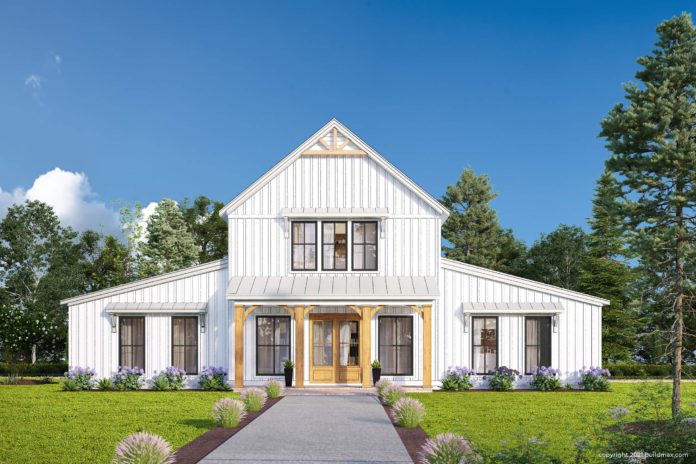The choice of siding for your barndominium holds the potential to be the defining feature that distinguishes your structure from every other metal building or shophouse available in your local market. When contemplating the ideal siding for your barndominium project, a multitude of critical factors come into play, each contributing to the ultimate decision-making process.
First and foremost, the aesthetic aspect, encompassing style and design considerations, plays a pivotal role. Naturally, you aspire for your completed barndominium to exude an exceptional and visually stunning appearance that reflects your personal taste and vision.
However, delving deeper into the decision-making process reveals that it’s not solely about aesthetics. The suitability of the chosen siding materials for the prevailing weather conditions in your specific geographic area is a consideration that often gets underestimated but can lead to regrettable consequences if overlooked. The durability and resilience of the siding against local climate extremes, such as intense sunlight, heavy rainfall, extreme temperatures, and even potential hurricanes or snowstorms, should be carefully assessed.
Furthermore, adhering to local building codes and conforming to any special specifications outlined in your barndominium house plans are paramount. Compliance with these regulations ensures the safety and legality of your construction project, avoiding potential legal complications and costly revisions down the road.
In light of these multifaceted factors, the question arises: how can you make an informed decision that aligns with your specific barndominium build? To embark on this journey, it’s crucial to explore the diverse array of siding options available and weigh their advantages and disadvantages in relation to your unique circumstances.
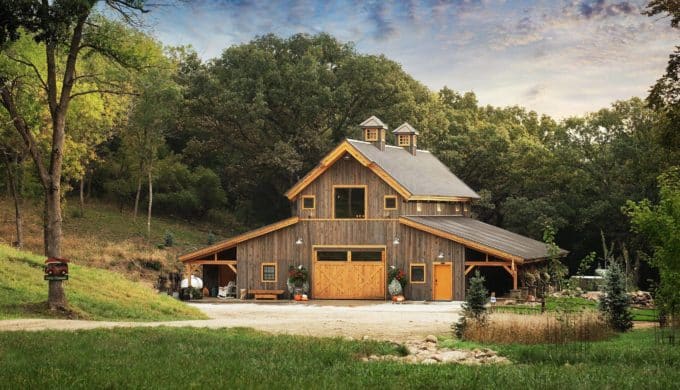
For the longest time, I held the belief that when it came to siding choices for a metal-framed barndominium, the default option was aluminum in various colors. This assumption was rooted in the fact that aluminum sheet metal siding is the tried-and-true, go-to material and is undeniably the most cost-effective choice that builders typically offer. However, what I hadn’t fully grasped was that many barndominium owners and builders were seeking a broader spectrum of siding alternatives, similar to what you’d find in conventional homes. The good news is that such options do exist, spanning a wide range of materials, each with its own set of remarkable advantages and, of course, some potential drawbacks, which we’ll delve into later in this article.
The material used to clad the exterior of your home plays a pivotal role in shaping the interior temperature dynamics. This becomes particularly critical in regions with colder climates. Insulating a steel-framed building can present challenges due to the inherent properties of metal. Metal, as many are aware, is notorious for being a poor heat insulator, which is precisely why you won’t find open-air metal coffee mugs casually scattered around the office. Given this limitation, it becomes abundantly clear that there are alternative materials far better suited to the task of ensuring optimal insulation and temperature control within your barndominium.
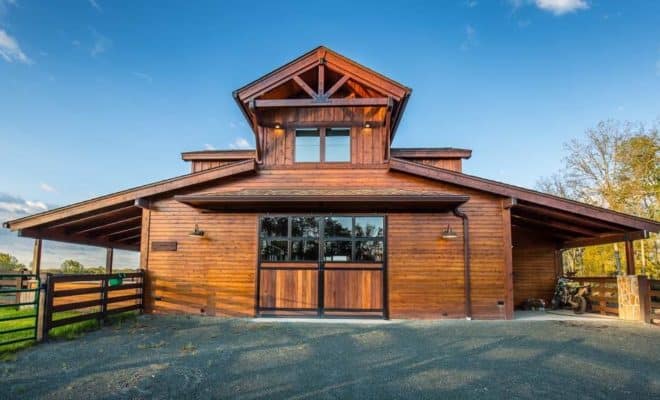
In our current era, characterized by the remarkable advancements in technology, the field of insulating steel structures has been undergoing a rapid and transformative evolution. This ongoing progression has paved the way for the development of increasingly efficient materials, which are continuously integrated into the realm of residential construction. In this article, we will explore this dynamic landscape with a particular emphasis on wood and metal siding, which stand as the most prominent and widely preferred options in today’s construction market. Both of these siding materials offer an extensive array of choices in terms of configurations, colors, shapes, and textures, making them the focal points of our discussion as we delve into the diverse world of modern construction and design.
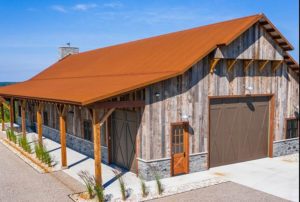
Opting for wood siding in the construction of a barndominium imparts a distinct and time-honored ambiance, evoking the rustic charm of a traditional farm. This particular aesthetic appeal is often the foremost consideration for individuals embarking on the barndominium construction journey. Whether their vision encompasses a log-style cabin barndominium, a cozy country cottage, or a picturesque farmhouse nestled amidst rolling fields, wood siding lends an authentic, storybook-like quality to the structure. It’s this unique quality that sets wood apart from its metal counterpart, making it a compelling choice for many barndominium enthusiasts.
In recent times, there has been a noticeable surge in the construction of barndominiums featuring wood siding, driven by the desire to capture that “fresh off the farm” ambiance. It’s safe to assume that these builders and homeowners have thoroughly weighed the pros and cons of wood versus metal siding during their planning phase – a crucial initial step in any home-building endeavor.
However, it’s important to acknowledge that selecting wood siding does come with its share of risks and considerations. Wood, whether in the form of slats or paneling, is inherently more vulnerable to environmental factors. One of the most evident challenges is its propensity to expand and contract over time in response to temperature and moisture fluctuations. If left untreated, prolonged exposure to moisture can lead to rot, and wood is a favorite target for various wood-boring insects. Thus, preventive wood treatment becomes an essential safeguard when contemplating a long-term residence.
Moreover, when wood becomes damp and subsequently dries, the potential for mold and mildew growth emerges. While treated lumber can mitigate this risk to a significant extent, it remains a surface conducive to the establishment of molds and bacteria, necessitating ongoing maintenance efforts.
Yet, despite these challenges, wood siding, when properly maintained, can achieve unparalleled beauty, rendering it a popular choice for barndominiums and shop houses nationwide. Its aesthetic allure is truly awe-inspiring, both on the exterior and interior. Nevertheless, as we’ve previously discussed in this article, it’s crucial to acknowledge that there are alternative materials better suited to certain aspects of the job, depending on your specific construction needs and priorities.
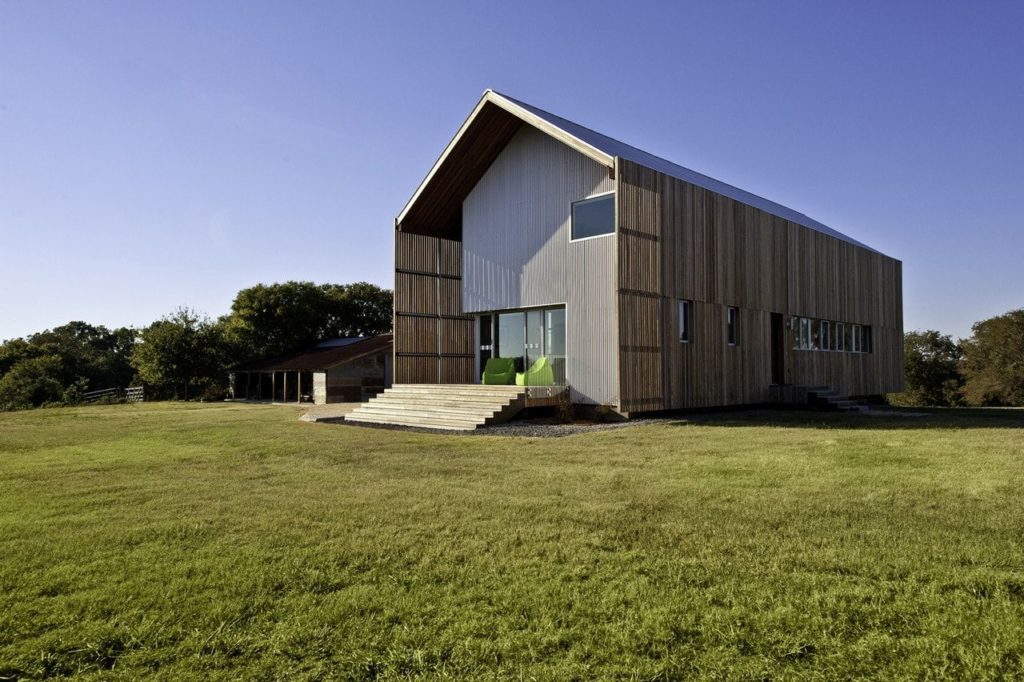
The world of metal siding has witnessed remarkable advancements in recent years, driven by the development of stronger materials and alloys. Manufacturers specializing in metal siding have recognized a growing demand for cost-effective alternatives to traditional wood siding, which not only emulate the appearance of wood but also offer enhanced stability and longevity. These innovations are particularly relevant to the construction of barndominiums, where achieving a rustic aesthetic is often a priority.
Nowadays, you have the option to select textured metal siding for your barndominium project, which convincingly mimics the appearance of weathered wood logs or aged barnwood. This choice presents a compelling alternative to traditional wood siding, which can be plagued by a host of issues. Metal, in contrast, exhibits remarkable resistance to various challenges, including fire, mold, bacterial growth, and the infiltration of wood-boring insects. It serves as a formidable barrier against pests, showcasing exceptional durability and a noteworthy degree of energy efficiency.
The specific type of metal employed in modern siding is engineered for extreme architectural stability, designed to withstand the harshest environmental conditions, including heavy winds and relentless rain. Compared to wood, metal boasts superior strength and resilience, making it the preferred choice for a growing number of first-time barndominium builders across the nation. The importance of constructing a sturdy and enduring structure cannot be overstated, as it must endure the most severe storms and emerge from them with its beauty and integrity intact. This emphasis on durability underscores the pivotal role of metal siding in ensuring the longevity and structural integrity of your cherished barndominium.
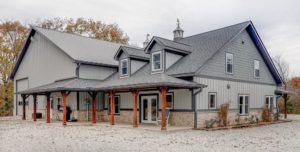
Diving deeper into the realm of siding materials, let’s explore the intriguing options of polymers and vinyl. These two choices are often grouped together due to their strikingly similar appearance and tactile qualities, making them initially challenging to differentiate. Both materials offer cost-effective solutions for siding, yet recent developments and concerns have caused a divergence in public favor.
Vinyl siding, for instance, while once a popular choice, has fallen out of favor with homeowners and builders alike. This shift in sentiment can be attributed to a significant drawback: vinyl emits toxic fumes when exposed to fire. This environmental concern has cast a shadow over its reputation, prompting individuals to seek alternatives in recent years.
On the other hand, polymer siding distinguishes itself from vinyl in several ways. Notably, it features a textured surface that closely mimics the look and feel of traditional wood siding. Furthermore, the seams where polymer siding panels meet align seamlessly, creating a cohesive and aesthetically pleasing facade. Perhaps most importantly, polymer siding avoids the environmental concerns associated with vinyl; it does not emit toxic fumes when subjected to heat or flames.
The advantages of polymer siding extend beyond its safety attributes. It proves remarkably easy to maintain and clean, requiring minimal effort to keep its appearance pristine. Moreover, its affordability and high efficiency make it a compelling contender for those seeking an alternative to wood siding. As we explore the diverse landscape of siding materials, polymer emerges as an option that harmoniously combines cost-effectiveness, aesthetics, and environmental responsibility.
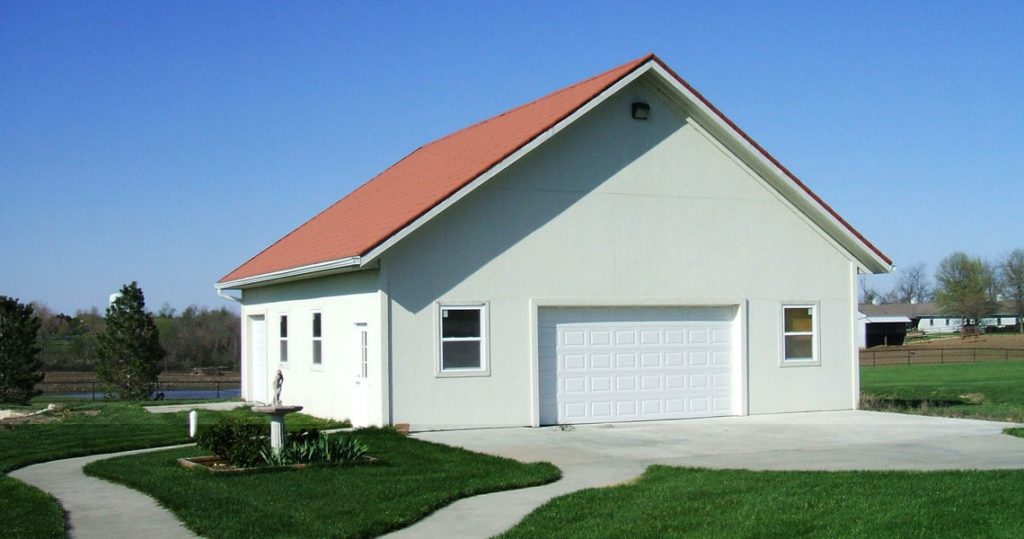
For those contemplating construction in the arid and sun-soaked regions of the United States, a unique and intriguing option to consider is a stucco exterior. Stucco is a building material with Spanish origins, consisting primarily of cement. It is expertly applied to the external surfaces of a home, often layered onto a framework of wood or wire mesh to facilitate its adhesion to the building’s structure. As it dries, stucco undergoes a transformative process, solidifying into an impressively robust and durable material that significantly bolsters the structural integrity of the home.
One of the standout features of stucco is its exceptional heat-insulating properties. This quality hearkens back to ancient construction techniques employed by native cultures worldwide, where mud huts were fashioned from a mixture of water and earth, left to bask in the sun, and eventually solidified into a rock-like substance. In essence, stucco functions as a time-tested insulator, effectively mitigating the searing heat characteristic of hot and dry climates.
It’s essential to note that stucco is not ideally suited for wet or rainy environments; it thrives in regions with minimal precipitation. Consequently, it’s more commonly found in the Southwestern United States, where the climate is conducive to its longevity and performance.
Considering its remarkable heat insulation properties and the structural strength it lends to a building, stucco presents itself as a compelling alternative to traditional metal or wood siding. However, its suitability depends on the specific geographical area in which you intend to build your barndominium. Stucco’s unique combination of durability, insulation, and aesthetic appeal makes it a promising option for those seeking an exterior finish that can withstand the rigors of a hot and dry climate.

In the contemporary construction market, you’re presented with a dazzling array of choices when it comes to siding materials, each offering an extensive palette of textures and colors to cater to your creative vision. However, embarking on your journey of selection requires meticulous research and thoughtful consideration, ensuring that your choice aligns seamlessly with the unique requirements of your specific project.
It’s imperative to keep in mind that each material comes with its own set of advantages and potential drawbacks. Therefore, it’s crucial to assess the risks involved comprehensively and take proactive measures to avert any undesirable consequences that may emerge after the completion of your barndominium build. This proactive approach not only safeguards the longevity and performance of your structure but also ensures that your investment stands as a testament to smart, informed decision-making in the realm of construction and design.
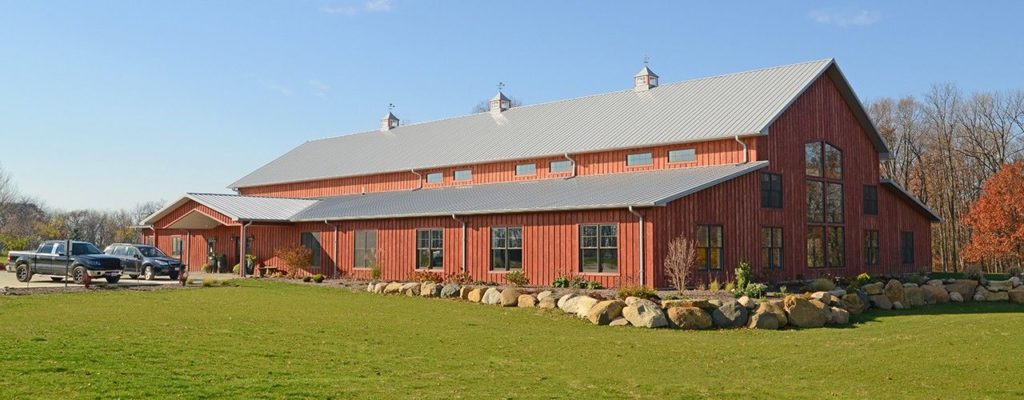
In a marketplace inundated with a multitude of siding options, it’s understandable to become enthralled by the myriad choices available. However, it’s essential to approach this decision with a discerning mindset and ask yourself a series of crucial questions before committing to a siding material. These inquiries serve as invaluable guides in the decision-making process, ensuring that your choice aligns seamlessly with the practicalities and long-term considerations of your barndominium project.
First and foremost, assess the practicality of the siding option under consideration. Does it fulfill your specific needs, taking into account factors like climate, maintenance requirements, and your aesthetic preferences?
Next, delve into the question of longevity. How durable is the chosen siding material, and what kind of lifespan can you realistically expect from it? Is it an investment that will stand the test of time, or will it require frequent upkeep and replacement?
Equally important is the consideration of maintenance. Will the siding demand continuous attention and care, or is it a low-maintenance choice that can essentially look after itself once installed? Evaluating the long-term maintenance requirements can save you both time and money in the future.
Lastly, remember that the siding you choose will significantly contribute to the overall look and feel of your home, an aspect you’ll live with for years to come. Therefore, ensure that you genuinely admire the color and style you select, as it will play a pivotal role in shaping the visual character of your barndominium. By addressing these key questions, you’ll navigate the complex world of siding options with confidence, ultimately arriving at a decision that aligns seamlessly with your project’s requirements and your personal preferences.
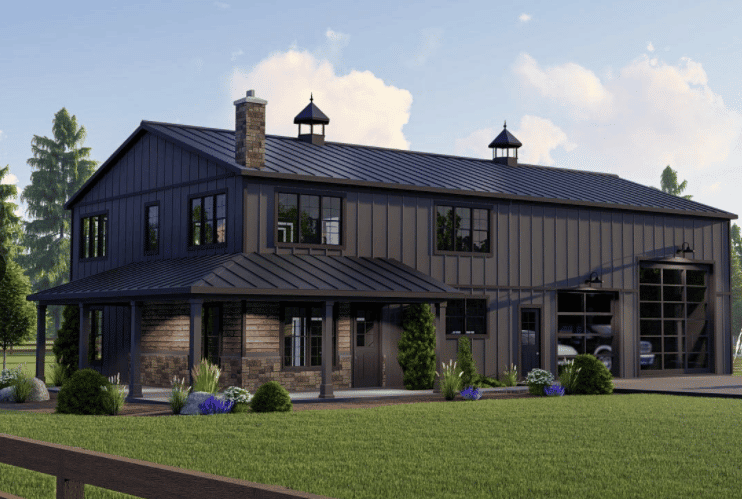
While the topic of matching siding colors with your roof warrants its own in-depth discussion, it’s worth emphasizing the importance of this aspect in your overall design considerations. A well-coordinated color scheme can make or break the visual harmony of your home. Driving past newly constructed houses, it’s not uncommon to wonder about the decision-making process behind the color choices. Achieving the perfect color harmony between your roof and siding is a meticulous task that requires attention to detail. The color of your roof should ideally complement and enhance the overall aesthetic of your siding.
As of 2020, a prevailing trend in home design featured white siding paired with a black roof, evoking a timeless farmhouse style. This popular combination is expected to persist through 2021 and possibly beyond. However, the dynamic world of design is ever-evolving, so it’s worth keeping an eye on emerging trends in the coming years.
The enduring appeal of barndominiums suggests that this architectural trend is far from fading into obscurity. Companies like Buildmax offer an extensive range of floorplans and customizable barndominium designs, providing ample flexibility for incorporating various siding options. The barndominium movement has not only gained significant traction but also generated momentum within the steel frame construction industry, solidifying its place in mainstream architectural discourse.
Armed with the knowledge that there is a plethora of siding options to choose from for your new barndominium build, the question arises: what material will you ultimately select to adorn your home? Your choice will not only impact the aesthetics but also the functionality and long-term maintenance of your barndominium, making it a decision of considerable significance as you embark on this exciting journey of construction and design.



